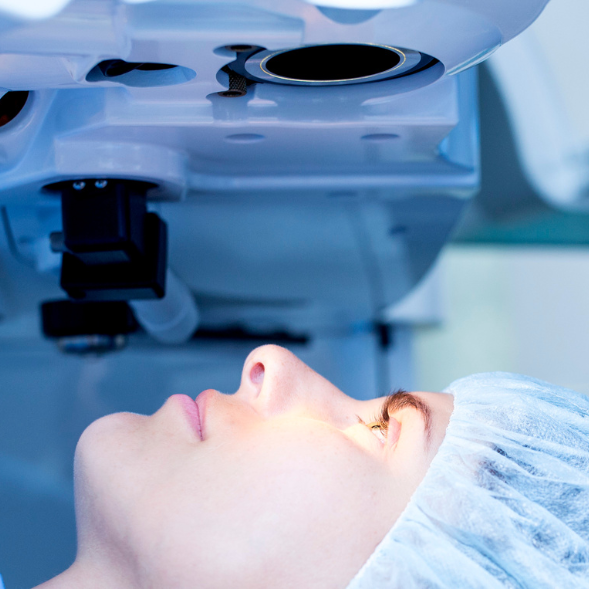
If you are at this website you are most likely interested in the idea of LASIK eye surgery in Chicago. Are you tired of contact lenses and the hassles of glasses? Although some glasses definitely look great, there is nothing better than independence from glasses when you want an active lifestyle. Imagine swimming, playing basketball or even reading the newspaper without glasses. LASIK could make this a reality for you.
Schedule your free consultation at our LASIK partner, Oakbrook LASIK, today.
The success of our LASIK eye surgery has been tremendous. Millions of people have stopped using glasses and are spectacle free after LASIK.

LASIK is a form of outpatient corneal surgery in which an ophthalmic surgeon uses a specialized and precise flap-making instrument, called a microkeratome, to create a thin flap of corneal tissue. This flap is raised and laid back while still attached to the cornea. Our Top Chicago, IL Lasik eye surgeons at Family Eye Physicians then use a state-of-the-art excimer laser to remove a pre-determined amount of corneal tissue from the exposed bed of the cornea. The amount of tissue to be removed is calculated based on the pre-operative determination of the power of your eye; these measurements are usually in agreement with recent prescriptions for your glasses and/or contact lenses. The flap is replaced and within minutes natural forces hold the flap down on the cornea.
Usually, within a few hours, the surface epithelium of the cornea begins to grow over the cut edge of the flap to seal it into position. LASIK can be used to correct nearsightedness (myopia), farsightedness (hyperopia), and astigmatism.
US FDA Outcomes After LASIK Surgery: US FDA Clinical study results show that, following Lasik surgery with the Bausch and Lomb 217 laser, 99.7% of patients see 20/40 or better* without glasses or contact lenses. 20/40 is the legal requirement for being able to drive without correction.
After LASIK surgery is complete, the corneal flap is put back in place. This flap will naturally adhere to the treated cornea, eliminating the need for sutures. Pressure from the eyelid and other factors will hold the flap in place as it heals, minimizing discomfort. The center of the cornea is now flattened, allowing light rays to be focused more precisely on the retina and images will be seen more sharply. Most LASIK patients notice a dramatic improvement in their vision immediately after the procedure. However, maximum improvement will occur over the next three to four weeks. Both antibiotic drops and steroid drops will be used for a period of two weeks following LASIK surgery to ensure proper healing. Artificial tears will also be used abundantly to help keep the cornea smooth and moist during the healing period.
The final outcome and speed of healing of the LASIK procedure are directly related to the care that is taken from the cornea after the procedure. It is very important to keep all postoperative appointments with your doctor.
Family Eye Physicians is one of the premier chicagoland ophthalmology practices dedicated to offering superior eye care services to protect and improve the vision quality of our patients. We strive to provide this by utilizing the most clinically relevant procedures and state of the art technology. more.